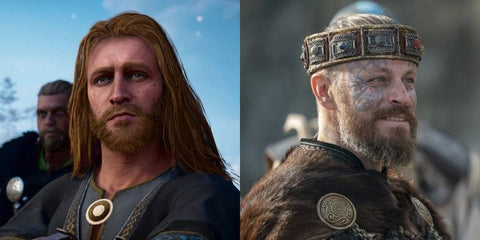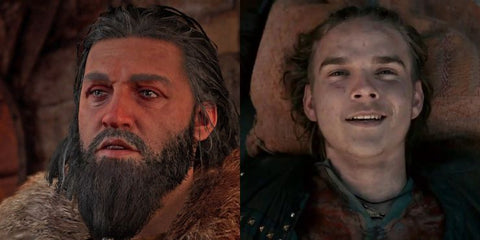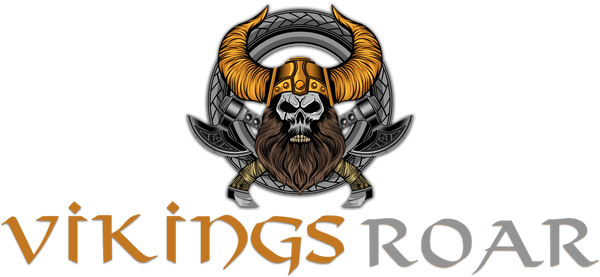
6 Historical Figures Who Appeared in Assassin's Creed Valhalla and Vikings
Share
6. King Harold

In actuality, Valhalla's Harald's sole aim was to take over Eivor and Sigurd's house in order to give them a cause to leave and travel to England, where the majority of the game took place. He was a considerably larger figure in the TV program and appeared to be a crueler guy than Vikings' Throughout the show, Harald performed a number of dubious things. The two characters didn't appear particularly similar, though, with their differing hair colors.
5. Halfdan/Hvitserk Ragnarsson

Both representations of Ragnar's son were fierce warriors, and that was about all they had in common. While they were theoretically intended to be the same character, they couldn't have been more different in the two pieces of media. They didn't even share a name, with Halfdan in Valhalla and Hvitserk in the play.
Halfdan was far more self-assured and psychologically strong than the Vikings' version. He was a real leader of his people, and he did not have all of Hvitserk's personal issues. He didn't, however, receive the same amount of screen time. Hvitserk was a prominent character in the show's final two seasons, albeit not as important as his brothers.
4. Rollo

In Valhalla and the Vikings, Rollo was a skillful and formidable fighter. He also had a big figure, which he appeared to enjoy flaunting because he was frequently shirtless—though the Vikings' version did wear garments more frequently in later seasons.
Despite this, their personalities were vastly different. The game's Rollo was considerably more joyful and promiscuous than his TV counterpart, and the show's Rollo was more gruff and treacherous. Their storylines were also extremely different, as the Vikings' version accomplished a lot more, from his early years in which he had a continual battle with Ragnar, which was one of the best in the Vikings series, through his time in Francia. The Valhalla version did, however, spend time.
3. Alfred

Alfred, often known as Alfred the Great, was portrayed as a patient and fair king in all forms of media. The one from Valhalla was a little more ethically dubious, but neither version was genuinely terrible. Unlike many of their peers, both were eager to collaborate with individuals from the north.
Their plots, on the other hand, were extremely different. Alfred of Valhalla was a key figure in Eivor's fight against the Order of the Ancients. Alternatively, Alfred's journey from Viking to King was all about his transformation from a timid boy to a genuine King of England. As a result, the Vikings' portrayal was much younger than his computer game equivalent, which explains why they seem so different.
2. Ubba/Ubbe Ragnarsson

When compared to their siblings, the two forms of Ubba (Valhalla)/Ubbe (Vikings) were cool and collected. Their calm demeanor, however, did not imply that they were weak, as they were powerful warriors who were no pushovers.
Their physical appearances were not too comparable, though; the guy from the program was significantly slimmer than his video game equivalent. In addition, their eyes and hair hues were unique. They also had different tales, since Ubba was frequently toppling rulers in England with Ivar. In contrast, the Vikings' character was included in several stories since Ubbe was probably the primary character of Vikings at the end of the season.
1. Ivar The Boneless

Each version of Ivar was insane and had no qualms about killing anyone he pleased. The one from Valhalla was a little more fun, as he was eager to crack jokes, even if they were potentially offensive. Ivar from Vikings was more ambitious, wanting to become the world's most famous Viking. In fact, most of Ivar's development in the program was around him obtaining more and more power.
He did so despite his inability to walk, which did not appear to be a condition shared by the Assassin's Creed character. But it wasn't their only aesthetic difference; the two didn't seem particularly similar, thanks in part to the show version being considerably younger.
We invite you to browse our store and see some of the most exquisite selections of Viking jewelry and apparel.
